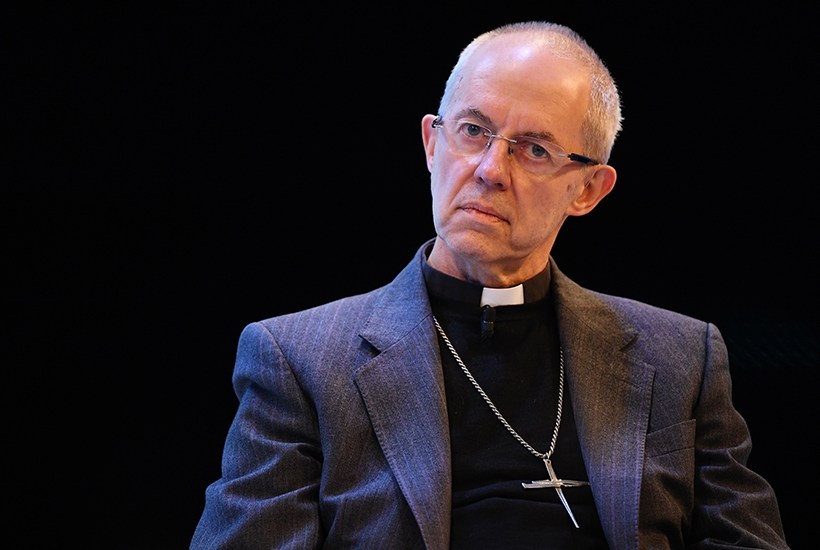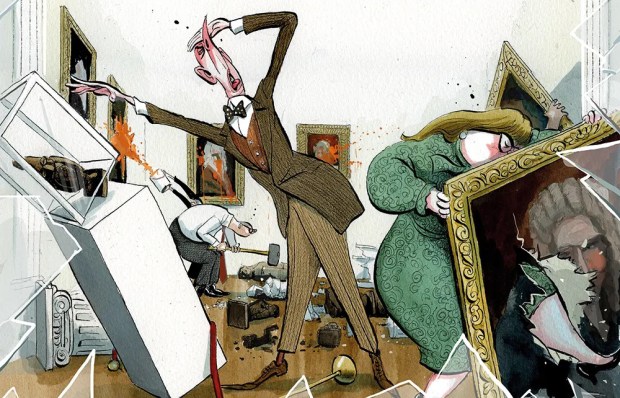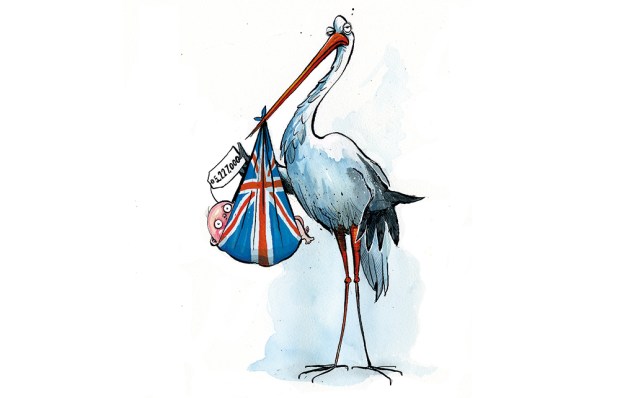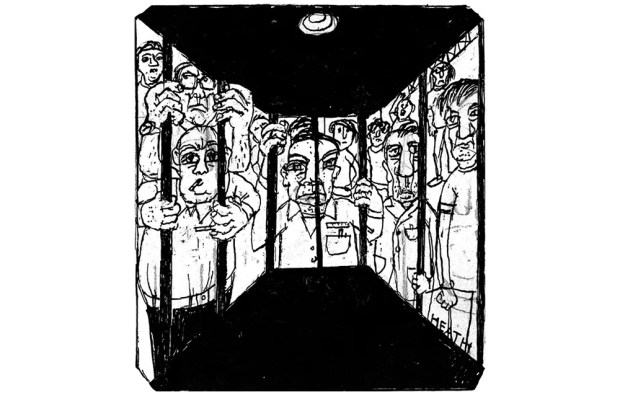During these months of inertia, I confess to having on occasion made illicit trips to churches in the English countryside. Enjoying the frisson that surely accompanies all law-breaking, I have often gone so far as the church door, there to examine not only the locks and bolts but also the laminated notices which adorn so many buildings of the Church of England. The other week I visited a 12th-century church whose laminated instructions were an especially fine example of their kind.
These signs informed the visitor that the church was closed due to the Covid crisis and that God can of course be worshipped anywhere, but (and this part was underlined) ‘not here’. A little harsh, that wording, I thought. But it did jolt me into considering the strange situation we are in, where the British public can now worship the deity anywhere but in church.
Over recent weeks our options for divine worship have grown. Until last month the only place available for worship outside the home was the supermarket or some other purveyor of essential goods. Then members of the public were allowed to offer up their prayers at the nation’s garden centres. As of this week, worship can occur in a greater variety of places. Travelling through the outskirts of London last week, I was struck by how many people were sinking pints at tables outside the pubs. Worshipping the Lord in their own way, I suppose.
It is strange, this total disappearance of the church from our national life. I know of many vicars and priests who have tried to keep things going in their communities, offering Zoom services, Bible readings and the like. But the senior ranks appear to have snuffed out the candles, cancelled the electricity contract and locked up the churches themselves.
At the start of the Covid crisis, as the government and medical professionals decided what the public could and could not do without, churches were deemed a non–essential item. Leaders of the various churches appear to have put up absolutely no resistance to this decision, despite Church of England services having piloted social distancing schemes for years. There is evidence that the leadership of both the Anglican and Roman Catholic churches actually asked to be shut down. Perhaps they saw the opportunity for a longish sabbatical, or a chance to rest their knees. They didn’t even raise an objection when the garden centres reopened and the churches remained locked.
Through this whole disconcerting period we have heard from Church of England leaders exactly twice. The first time was when a collection of bishops decided that the childcare arrangements of Dominic Cummings were so exceptionally demonic that the Church needed to unite in denouncing him and his wife. The next moment of clerical intervention came when the Black Lives Matter protests kicked off again.
After the death of George Floyd in Minnesota, Justin Welby was all over the internet, denouncing racism and white supremacy in slightly unhinged terms. It suggested that the C of E has a problem I would be surprised if it had. There is a certain amount of Lib Dem-ery in the General Synod, and a great amount of Green party at prayer, but I would wager there is relatively little Nazism.
The growing number of non-Anglicans might take away a different impression. Soon Rose Hudson-Wilkin was on the airwaves. She is the vicar whom Speaker Bercow made his chaplain and whose skin colour would not appear to have adversely affected her career. Now the Bishop of Dover, Hudson–Wilkin appeared on Sky to proclaim that ‘racism is a pandemic’ and that ‘institutional racism’ exists in the Church as well as wider society. Asked if it was acceptable that the five most senior clergy in the C of E are all white, she preached: ‘It is not okay. We must examine ourselves. It is not good enough.’ John Sentamu, the Arch-bishop of York, had stood down just one week earlier.
Not everybody will want to get their anti-racism five-a-day from the C of E, of course. Particularly when the Church in question appears to have given up on what people in marketing would call its USP. After all, this could have been a great opportunity for the Church. With everyone in the land forced to reflect on their potentially imminent mortality, I imagine that a fair few were wondering if something other than Netflix might fill the void. Yet the Church was silent.
At one point it was made known that Justin Welby had not been missing in action completely. Apart from that service at his kitchen table on Easter Sunday, the C of E’s most senior clergyman had been working during lockdown as a volunteer chaplain at St Thomas’ Hospital — which is humble and noble. But any clergyman in the land can be a volunteer chaplain. The vacancy throughout this period was an Archbishop of Canterbury–shaped one.
What might the Church have done? Well, watching the Pope worshipping alone in St Peter’s, I wondered why the C of E had not done something similar. Why not have a service each week broadcast online — or on the BBC — from a different one of our great cathedrals, with the relevant bishop commemorating the Eucharist and preaching the Gospel?
Perhaps it would have been different if the virus had hit us harder: if the deaths had been at the rate we were expecting at the outset. If the plague had truly roared across the land then perhaps the churches would have risen to the occasion, taught the Christian religion, told us of the love of God and shown us the correct manner in which to prepare to meet the creator.
But they didn’t. They laminated the notices, locked the doors and disappeared completely from our national life. An un-recoverable wound, I would guess. Self-inflicted with bewildering willingness.
Got something to add? Join the discussion and comment below.
Get 10 issues for just $10
Subscribe to The Spectator Australia today for the next 10 magazine issues, plus full online access, for just $10.
You might disagree with half of it, but you’ll enjoy reading all of it. Try your first month for free, then just $2 a week for the remainder of your first year.















Comments
Don't miss out
Join the conversation with other Spectator Australia readers. Subscribe to leave a comment.
SUBSCRIBEAlready a subscriber? Log in